Surf PhotographyCapturing A Cold Water Paradise

Jesús Salazar & The Isla Todos Santos
“It’s a cold water Paradise,” says Jesús Salazar, a surf photographer from Baja California, Mexico. He refers to Todos Santos (aka “Killers”), the infamous big wave surf spot on the island of the same name situated roughly 20kms (12miles) off the coast of Ensenada. And whilst the island’s name does have religious connotations (“Todos Santos” means “All Saints” in Spanish), calling it “Paradise” in this context bears a more terrestrial significance. It relates to the reef’s ability to convert W-NW swells into massive walls of water worthy of veneration. It alludes to the goddess-like power and beauty of the waves. It has to do with the heavenly aura exuded by a clump of land barely trodden by human feet.
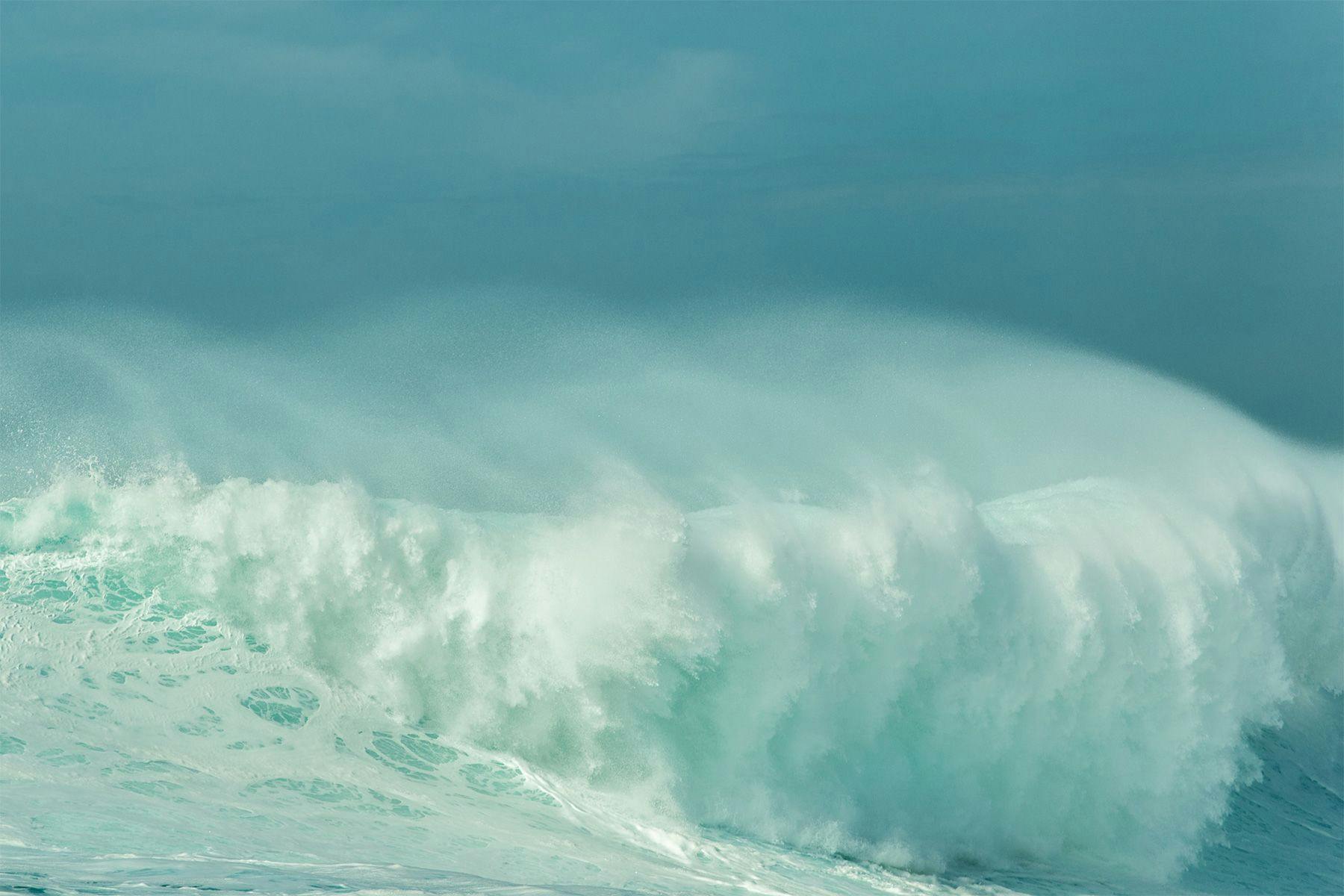
Indeed, for Salazar, Isla Todos Santos has always carried a mystical quality. Growing up, the island was in sight and out of reach; a mirage; an oasis of land in a desert of sea. Day in, day out, he watched its outline obstruct the horizon not knowing what was on it – or behind it. “I never imagined that there are huge waves back there,” recalls Salazar. “They had always been only rumours.” It wasn’t until much later – after skateboarding got him into surfing and filming got him into photography – that he finally got to verify that the tales told weren’t those of fishermen.
Nowadays, surf photography is what takes him to the island; yet the motives behind his visits are not solely to portray waves. Deeply involved in environmental studies and currently finalising his Masters in Coastal Management, Salazar wants to use his passion for surfing and photography to highlight the traits that make Todos Santos paradisical. Not only to pay tribute to a place that has set itself so deeply in his memory and defined his work but, as he puts it, “to sensitize viewers of the conservation and preservation of the places we surf and love.”
Surf Simply caught up with Jesús Salazar to see through his lens at Isla Todos Santos and hear his take on the surf photography scene in Mexico.
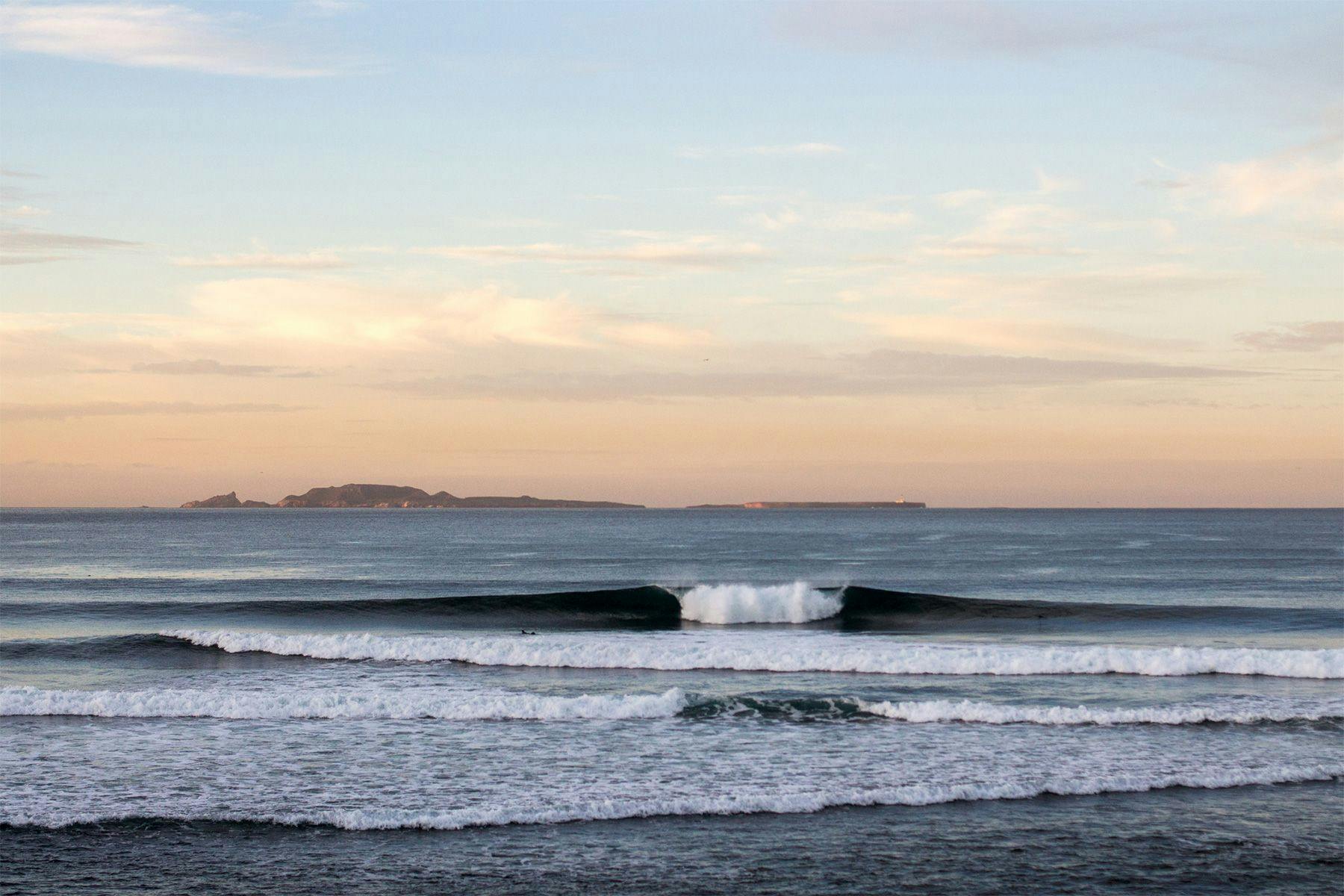
Todos Santos was first surfed by members of the Baja Surf and Windansea Surf Clubs in 1965. The session took place at Thor’s Hammer (a spot on the island named after Thor Svenson, the president of Windansea Surf Club at that time) and was well-documented by photographers Ron Stoner and Leroy Granis. Some of the pioneers were Mexicans Nacho Félix, Marcos Geffroy, Rocky Changala and Americans Skip Frye, Myke Hynson, Rusty Miller, and Mike Purpus.
After the initial contact, surfing in Todos Santos underwent a brief hiatus until the 70s, when Mexican surfers like Juan Hussong, Victor Corral and Antonio Díaz started to surf Killers – the nowadays renowned big wave spot. Yet it was Tom Curren and photographer Larry “Flame” Moore who finally put the island on the surf map. Moore’s photographs are the ones that inspire me to go out there.
In this image, clear skies reveal the sleeping dragon foregrounded by clean, perfect A-Frames at our local break on the mainland.

I’ve now been visiting the island regularly for the last 7 years. My first surf-related experience at Todos Santos was in 2016; I went there to document the XXL Wave Tour event (the Todos Santos Big Wave Challenge) when I witnessed the biggest waves I have ever seen in my life, some of which reached up to 50ft.
This picture was taken from the south island during a two-week stay in bird-nesting season. A research team and I were doing fieldwork, capturing and counting individuals of an endemic species for conservation purposes. Little is known about the fauna and flora of Todos Santos, so it was great to have had the opportunity to photograph and learn first-hand from scientists about some of the reasons why we should conserve it.
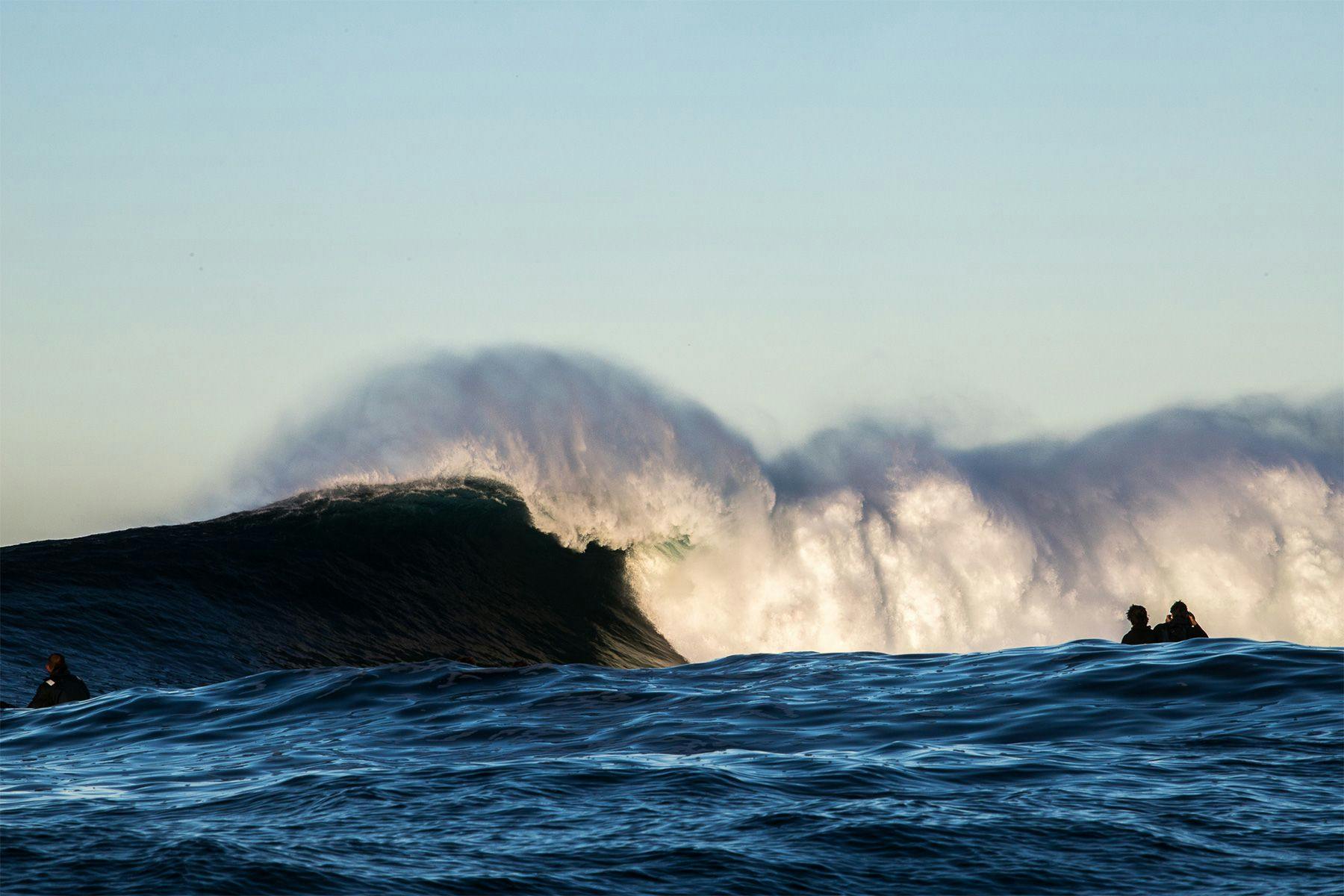
This is a picture of the biggest swell of the Winter 2020/2021. Surfer Greg Long ran water safety that day; he was giving safety tours with the photographers who were working on the jet-skis. Here, Ryan “Chachi” Craig was given first-row seats for the first sets of that day.
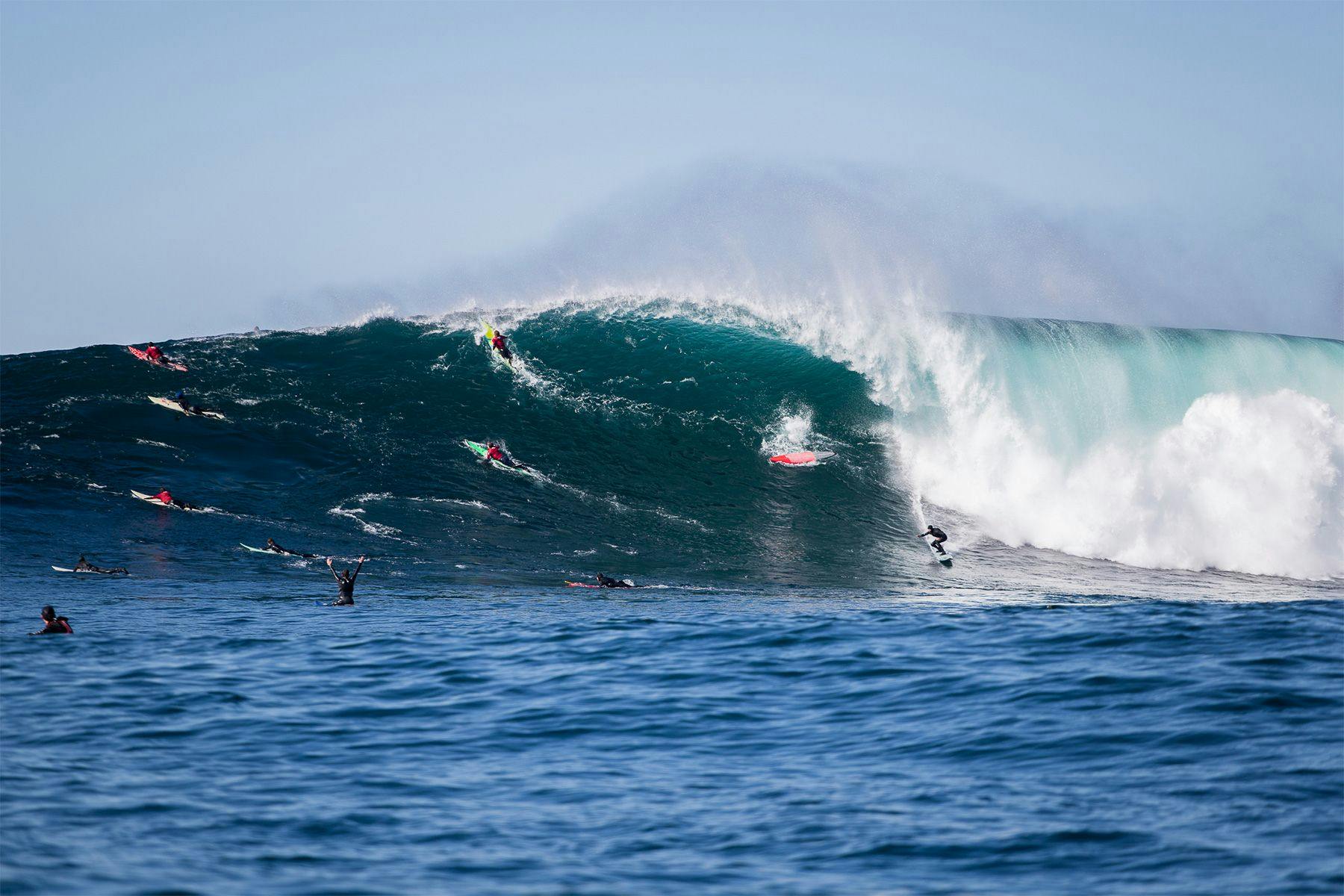
As Greg Long finished giving safety tours, he jumped in the water for a long 3-hour wait before this bomb finally came his way. He paddled back for another long wait, making a 6-8 hour session for 3 or 4 waves. This was the wave of the day. He only picked the very best ones.
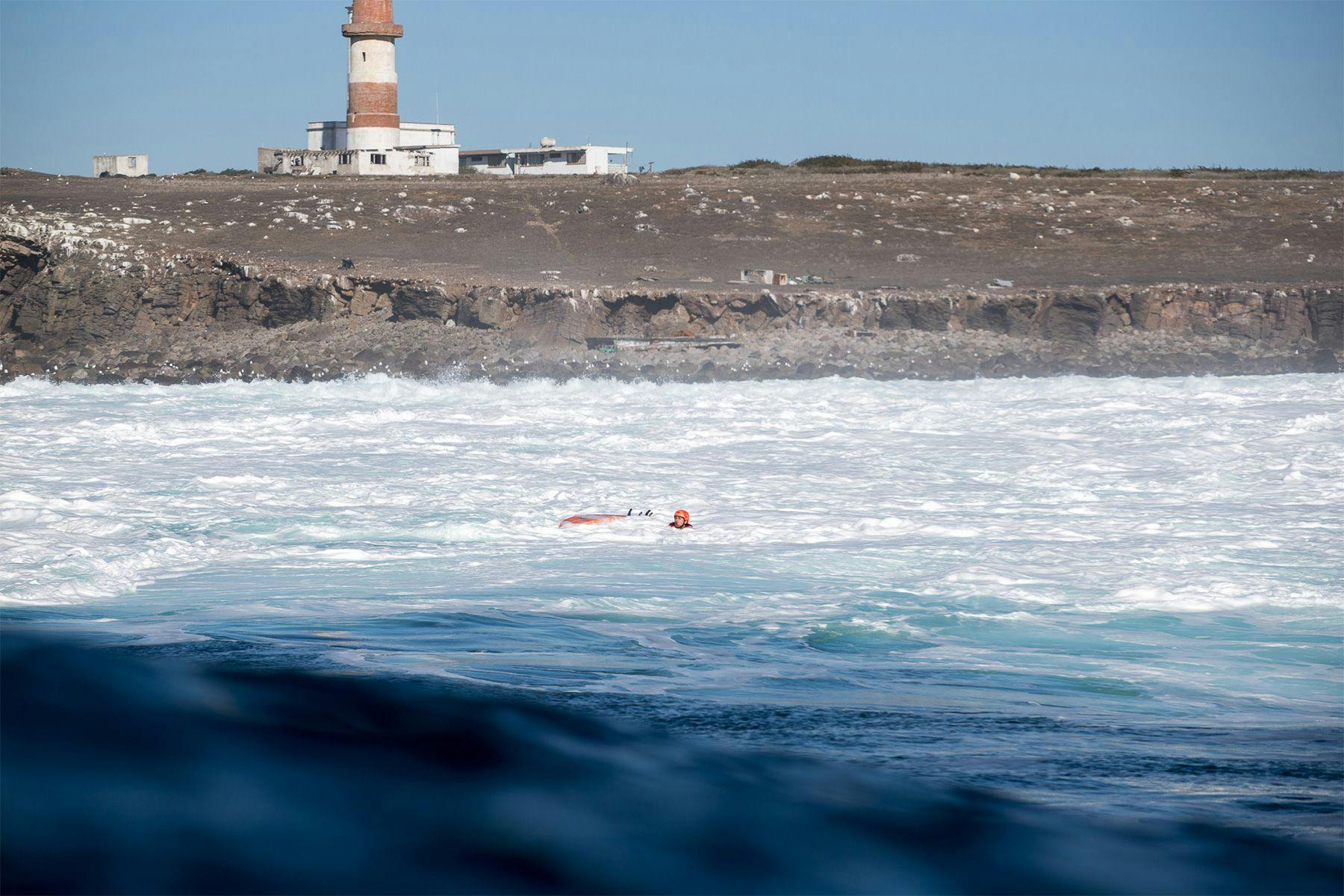
Two-wave hold-downs are pretty common on a massive day at Todos Santos. Therefore, water safety is of the utmost importance in waves of consequence to mitigate the loss of lives. This is common practice in Todos Santos; rarely do surfers go out without a safety crew.
It took me a year to swim out at Todos Santos. Looking back, it was one of the stupidest things I’ve ever done in my life; things could have gone very wrong with my inexperience. But I guess part of me wanted to prove myself as a surf photographer in big waves. After all, in theory, it is a relatively easy task: you sit in the channel and wait for the set to come through. Then you swim as hard as you can away from the wave so as not to get sucked by the fast current that drags everything towards the impact zone. When this happens, however, your body tingles from head to toe.

A set wave viewed from the boat. Having an experienced captain take you to the island is of-the-essence. Capitan Joram Robles (portrayed) always takes good care of me; he drops me in the best spots to swim in and comes to get me to assure I’m safe on the swim back. His assistance is also crucial when I’m photographing from the boat, as he knows how to get us to the right position for a clear shot.
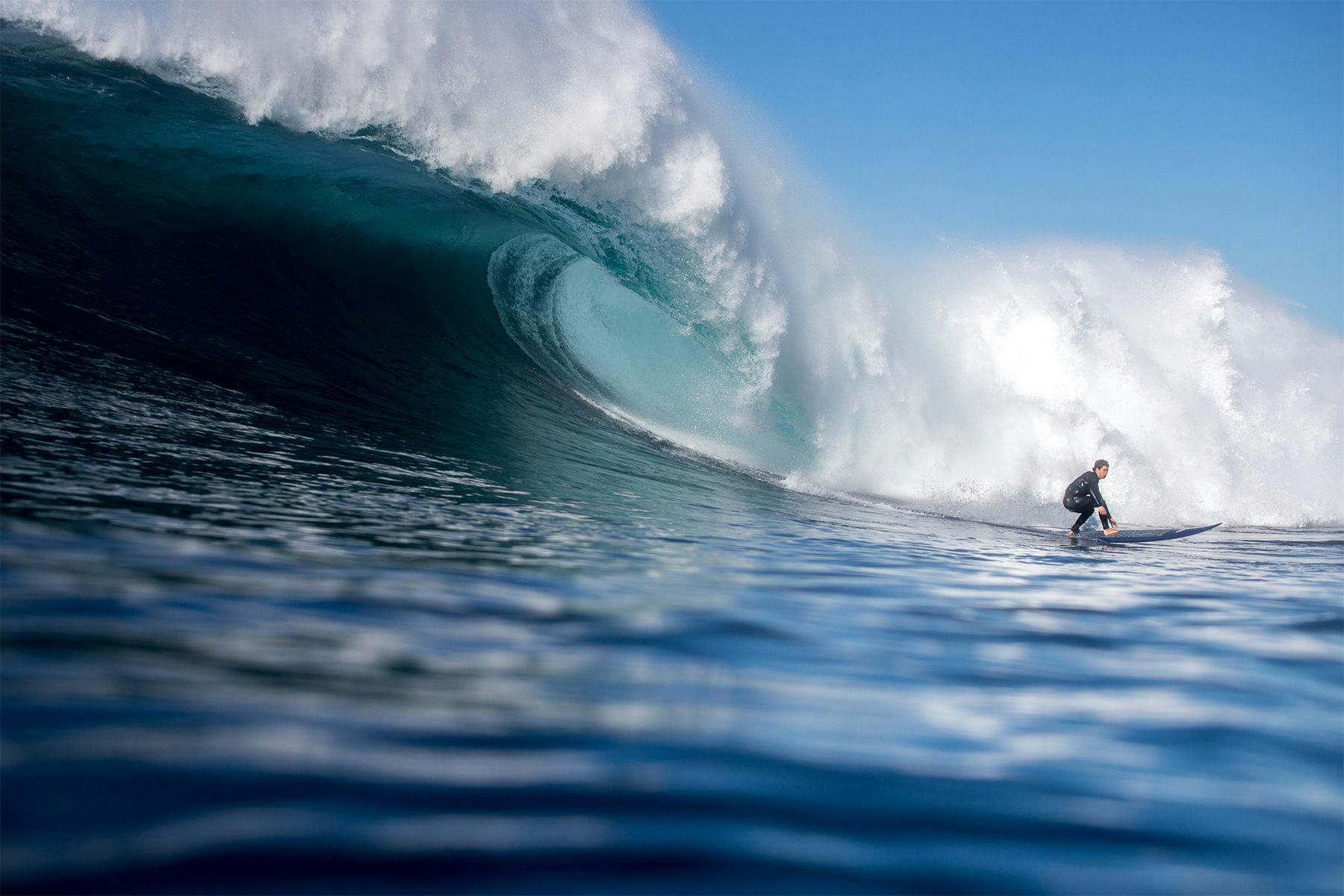
These are the most perfect conditions I have ever seen at Todos Santos. It was big (but not massive), blowing light offshore, and the blue hues were just amazing. Besides, there were only four people in the water. It’s a picture I’m particularly proud of because it shows the difference in my positioning from 7 years ago. I have been training a lot since then, always trying to sit in the most critical spot my body and mind can take me to get the job done.
Portrayed is Emiliano Cabello, a young local charger. I have been documenting his transition into big wave surfing, hoping to raise his profile and exposure to help him to secure the support and backing that he needs to ride waves like these. At the same time, a lot of my work revolves around concepts like Mexican surf identity and culture, so I like to take advantage of being in the Mexican surf crib to tell stories of our local surfers. I do this to understand why we surf, why I pick my camera or surfboard up to get in the water.
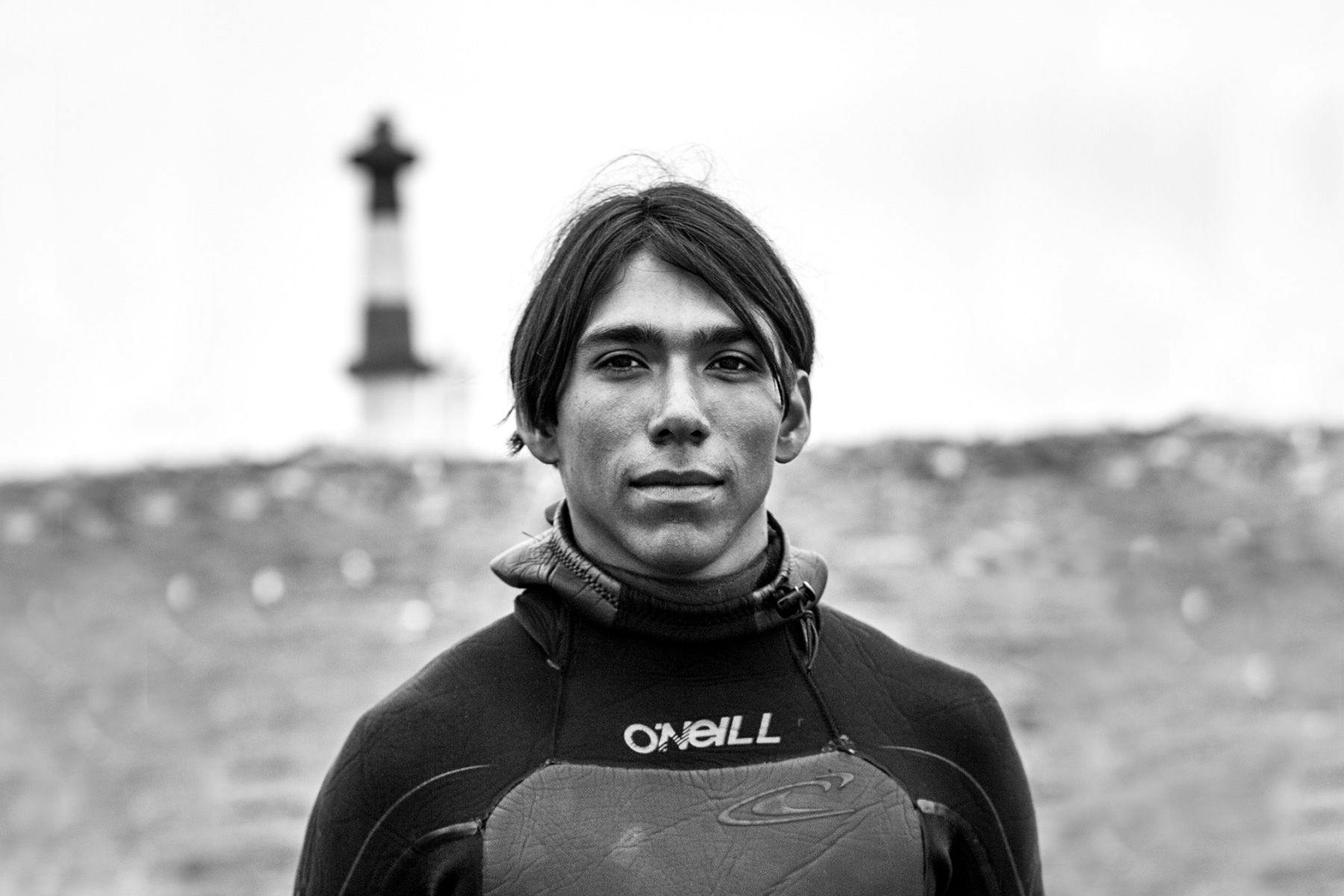
Vicente Yazbek is known for his performance at the Todos Santos Big Wave Challenge in 2016. He is constantly chasing the largest swells at Todos Santos.
Being a surf photographer in Mexico is hard; I can count on one hand how many have succeeded. It has a lot to do with the dynamics around the place and the fact we don’t have any Mexican surfing magazines; the surf industry here is still taking its first steps. There is the intention, but not much, to provide opportunity. Still, being from a place like Baja California where there are unexplored world-class waves and stories galore, we have been managing.
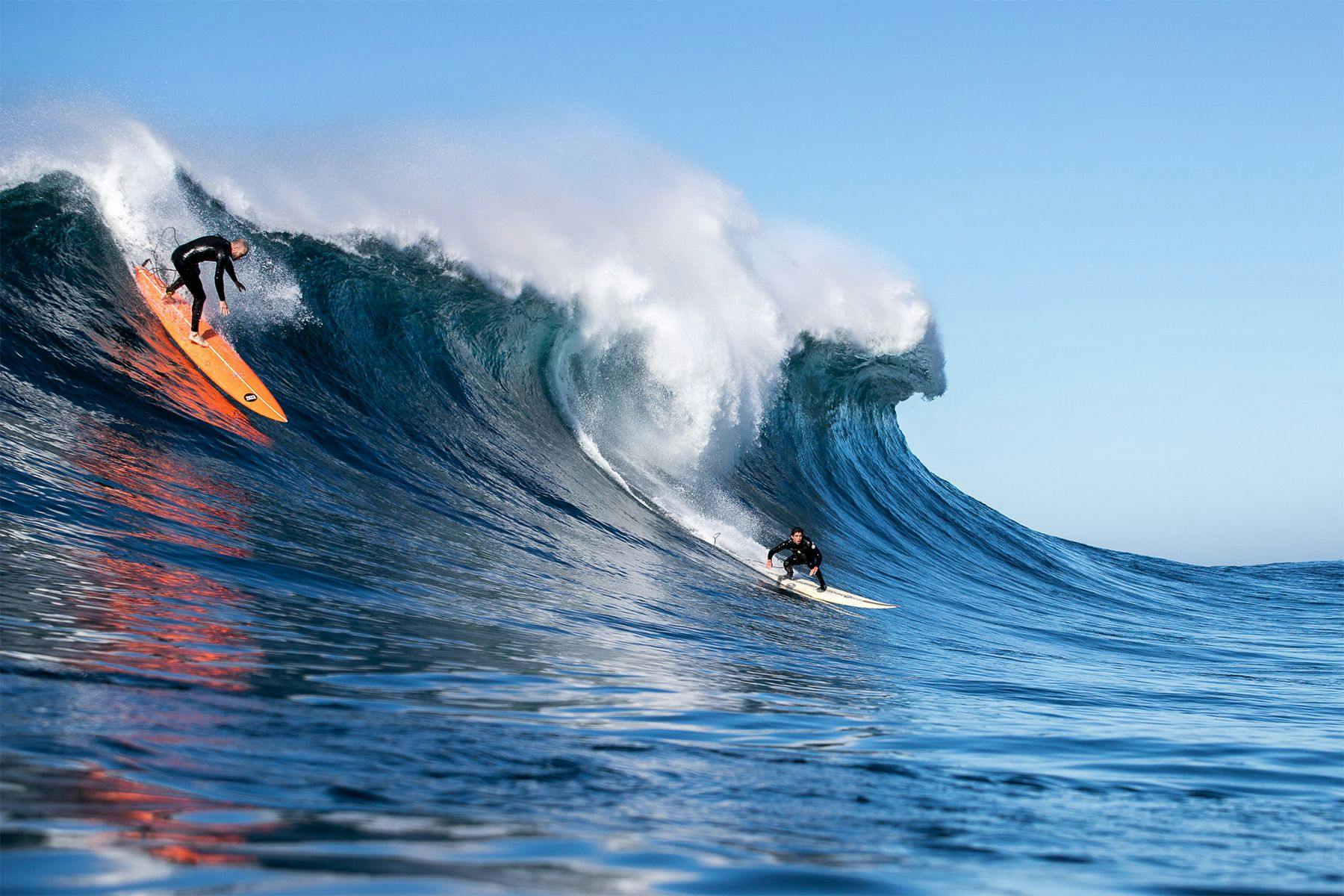
On the right is Axel Sain Sandoval, another local young charger. Although he is a great tube rider and aerial expert, he rode the most perfect waves that day, showing no fear and lots of confidence. This was only his fifth time in big waves.

This is Jimel Corzo from Puerto Escondido, the best-ranked big wave surfer Mexico has ever had in the big wave tour. He comes from a family of talented surfers such as Angelo Lozano and the ISA World Champion, Jhonny Corzo.

Brazilian big wave surfer Lucas Chumbo.

Very few people can say they have spent the night on Todos Santos; you need government permission to step on any island of the Pacific coast of Mexico. During my two-week stay with the research team, we got to see the Milky Way for two weeks straight. It was a treat after a long day of work.

Absolute perfection. These conditions are super rare. I have only had the privilege to witness a couple of perfect days like this. Objects may look bigger than they are.
The author and Surf Simply would like to thank Jesús Salazar for his assistance with the article. To get a constant feed of Todos Santos and Baja California surf photos give him a follow on Instagram @jsslzr.